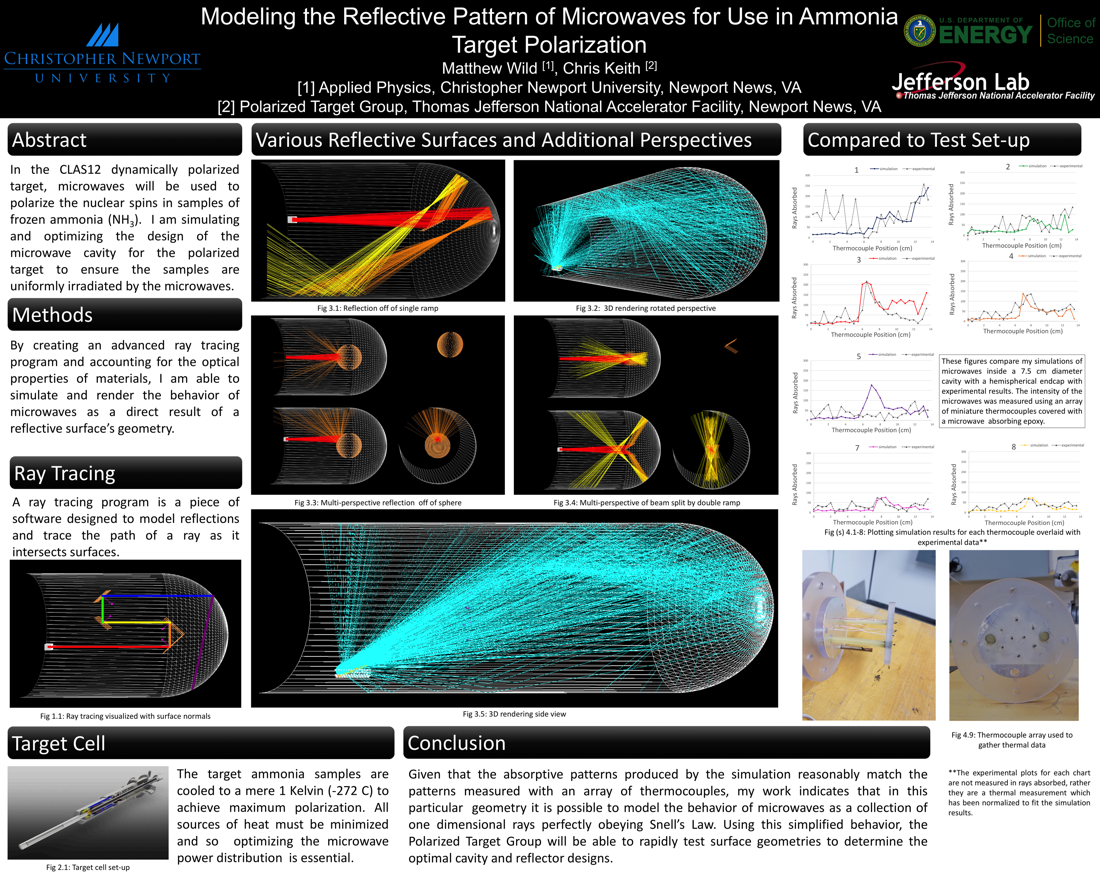Undergraduate Research at Jefferson Lab
Modeling the Reflective Pattern of Microwaves for Use in Ammonia Target Polarization
Student: Mathew Wild
School: Christopher Newport University
Mentored By: Chris Keith
The Polarized Target Group is leading the development of new ammonia targets to be used in Jefferson Lab's Experimental Hall B. By directing a high-energy electron beam into two polarized targets, Jefferson Lab will be able to probe deep into the structure of the proton. Free electrons, polarized by a strong magnetic field, are magnetically coupled with free protons in the target material such that, when exposed to microwaves with a frequency of 150±15 GHz, the electrons' spin flips from the down state to the up along with the proton. Given the surrounding low temperature (1 K), this state is unstable for the electron and it rapidly reverts to the down state emitting a photon at a slightly lower frequency than was absorbed by the coupled pair; thus the proton remains polarized while freeing the electron for coupling with another proton. The structural design of the experiment prohibited direct irradiation of the target cells and therefore requires the design of some surface(s) with geometry such that the microwaves are reflected at the target cells. I developed an advanced ray tracing simulation to model the reflection and absorption pattern various reflective surface geometries produce. While surfaces defined as reflectors remain stationary, the position of target surfaces are discretely stepped through the length of the enclosing cavity, recording the number of rays absorbed at each specified interval. Once the targets reach the end of the chamber, the user may view the results of the simulation in either of the following two formats: a group of charts displaying the normalized absorption data of each surface or view and interact with a 3D rendering of the simulation. After modeling an array of thermocouples as targets and rescaling the normalized simulation results to be the same magnitude as experimental thermal measurements, the absorption patterns match closely to those produced in the simulation. The implications that the absorptive pattern produced by the simulation match the pattern measured experimentally using an array of thermocouples indicate that it is possible, in this environment, to model the behavior of microwaves as if they were a collection of one dimensional rays perfectly behaving Snell's Law. It has also been determined that the greater the number of rays, the more accurate the result. However, even when rendering millions of rays, this simplified model requires significantly less computational power and time compared to advanced methods which take days to complete using Maxwell's equations and material optics. Using this simplified behavior, the Polarized Target Group will be able to rapidly test surface geometries to determine the optimal reflector design.

Citation and linking information
For questions about this page, please contact Education Web Administrator.
